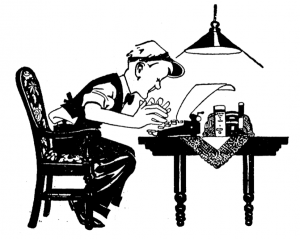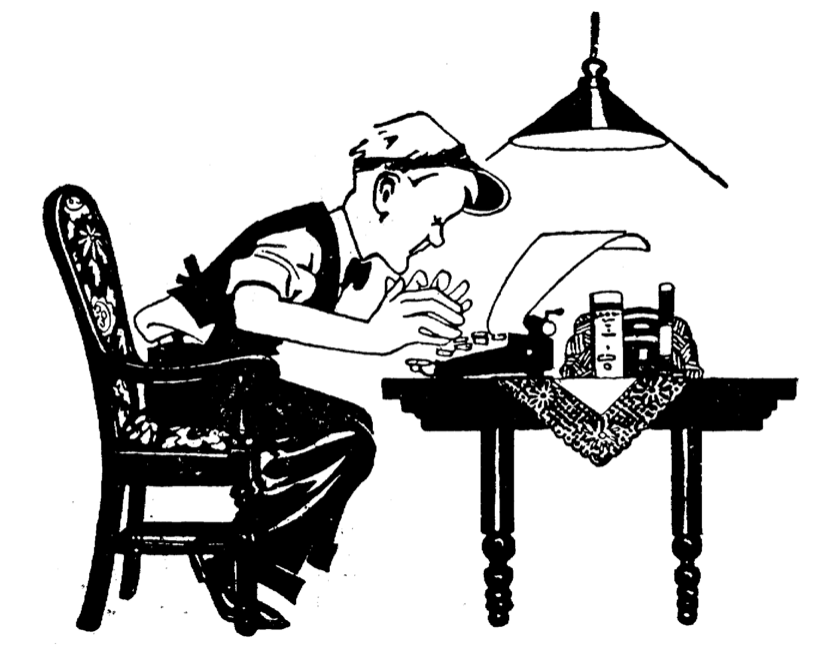Media training in two minutes
What is the wise thing to do when a journalist knocks on the lab door and wants to write about your research? The answer is this: take a big breath, buy some time, gather your thoughts and then bid them welcome with the ambition to take command of the interview—in a curious and friendly way.
My personal experience as a popular science writer is that the senior research community can be divided into two groups:
- those who have educational talent and passion and are cooperative when they meet a representative of the media; they see a chance to present their research to the public.
- those who are glaring down from their ebony tower and give rather snotty answers, convinced that ”if you are not a member of my research field, it is hopeless to make you understand my esoteric subject”; they consider the whole thing as a waste of time because I will get it all wrong anyway.

Luckily, group one is a lot larger than group two. What they both have in common, though, is that all too many of them need to be hunted down, rather than just contacted. Busy professors often have a fantastic ability to just ignore phonecalls, text messages, emails and PostIt notes that their colleagues put on their computer screen. Well, well …
For a junior scientist, the first encounters with the media can feel both exciting and stressful. Here are some advice from ‘the other side of the notepad’ which will help you get your messages across unscrambled:
- Stay in touch! (Answer any email within 24 hours, check the voicemail, give signs of life, even if you are not available for a call or in a situation where you can focus on your email writing.) Remember that the journalist is probably working under a deadline, and will most likely contact some other scientist in your field if you are hard to find.
- Educate the journalist … and the world. Start with the basics and guide the journalist towards your field and projects. Stop talking for a while if you see that he or she is struggling to keep up with the note taking. By keeping eye contact, you will see if they get your explanations or not.
- Suggest that you can check the text for errors. When you recieve the manuscript, work fast and return it within less than 24 hours. Don’t interfere with the journalistic craft – just make sure that facts and quotes are correct. Sometimes a phone call is needed to explain things that have been misunderstood.
- Stay in touch if you think that the journalist has made a great job. Keep them informed about news that can be of interest to them. Offer help when they write about other subjects (but don’t pretend to be an authority in a field where you are an amateur).
- Most of all: be thankful that the media are interested in your stuff. This is especially important if you plan to be a scientific entrepreneur and see a future in commercialising your research.
- Claire Price of Crastina receives outreach award from Royal Society of Biology - October 25, 2020
- Agile Science student project at Brussels Engineering School ECAM: “We can’t wait to try it again!” - August 28, 2020
- Create an infographic in the Lifeology SciArt Infographic Challenge - June 16, 2020
- Adam Ruben – The scientist that teaches undergraduate students comedy - March 27, 2020
- Sam Gregson, Bad Boy of Science: “Comedy helps to bridge the gap” - March 10, 2020
- The Coolest Science Merchandise of 2019 - December 16, 2019
- Science Media Centre (UK) offers guide on dealing with online harassment in academia - November 26, 2019
- Agile project management taught to students and researchers at Karolinska Institutet - September 20, 2019
- Stefan Jansson: Improve your credibility! (Crastina Column, September 2019) - September 6, 2019
- The People’s Poet: Silke Kramprich, tech communicator - August 31, 2019





If you want more of this stuff, the following blog post is recommended:
http://talkingscience.weebly.com/blog/putting-scientists-in-control-of-an-interview
One more great article:
http://drsiobhanodwyer.wordpress.com/2014/09/12/whos-afraid-of-the-big-bad-journalist/